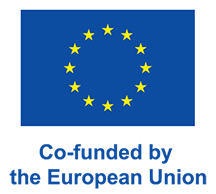

Bridging the gap between university
and industry:
Master Curricular Supporting
the Development of Green Jobs
and Digital Skills in the Ukrainian Building Sector
Project 101127884 – The BRIDGE
This project is funded by the European Union. Views and opinions expressed are however those of the author(s) only and do not necessarily reflect those of the European Union or the European Education and Culture Executive Agency. Neither the European Union nor the granting authority can be held responsible for them.
Website: https://thebridgeproject.org.ua
Project acronym: The BRIDGE
Topic: 101127884-ERASMUS-EDU-2023-CBHE-STRAND-2
Project term: November 01, 2023 – October 31, 2026
Project Coordinator: Prydniprovska State Academy of Civil Engineering and Architecture, Dnipro, Ukraine
Purpose of project
The establishment of new Master Programmes (MPs) on BIM Technology in Construction and Civil Engineering in Ukrainian Universities (UAUs) aims at promoting the EU best practices in terms of educational methodologies and specific knowledge related to the energy efficiency and sustainability of buildings and communities, drawing on the requirements set by UN 2030 Agenda, with specific reference to SDGs 7, 10, 11 and the priorities of the EU Green Deal and an economy that works for people.
Project tasks
1. Curricular development tailored to labour market requirements and enable graduates in Architecture and Construction to support their employability expectations. The new study programs will be implemented in 5 UAUs with different training directions according to the local needs. The development process will be completed by updating BIM centres and new teaching materials to publish jointly by UA and EU teachers.
2. Foster links university-enterprises to address mismatches between the requirements of employers and the offer of HE institutions and propose integral solutions to enhance better employability of students in civil engineering and construction sectors.
3. Digitalization of 10 elective modules, 2 from each UAU so that the consortium participants could use them openly on a joint e-Bridge platform in order to move towards virtual mobility in the long run. Main beneficiaries of the outputs to be produced will be about: 60 UA senior teaching staff, 50 UA junior teachers and assistants, 100 final year students as well as new graduates and students enrolled to the new Master Programmes.
Expected result
D1.1. Reports on background context according to the survey / study visits.
D1.2. Stakeholders’ Platform.
D1.3. Programme Handbooks.
D1.4. Accreditation certificate by competent authority.
D2.1. Set of documents certifying the installation and official inventory of equipment.
D2.2 Digitally printed Lecture Notes and Case Studies.
D2.3. Official documentation for the Programme delivery in accordance with hosting UAUs’ regulations.
D3.1. Certification of at least 30 Ukrainian junior teaching staff upon their completion of the empowerment training programme.
D3.2. Certificated results of internship hosted by UA stakeholders.
D4.1. Quality Assurance Plan
D4.2. Evaluation Board setting-up and periodical reports
D4.3. Monitoring reports as results of the internal mechanisms
D5.1. Dissemination Plan
D5.2. BRIDGE website platform
D5.3. Reports on organization of Induction Events and an International Final Dissemination Conference. D5.4 Reports of dissemination activities.
D6.1. Sustainability Plan.
D6.2. KEOs Strategy.
D6.3. Stipulation of the BRIDGE Network.
D7.1. Prompt call and carrying out of the kick-off meeting (KoM).
D7.2. Project Management Plan.
D7.3. Progress Report.
up
